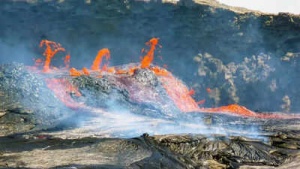Forget the average garden snakes; the world's largest snakes are truly awe-inspiring creatures. From pythons capable of swallowing entire deer to anacondas that thrive in swampy environments, these colossal serpents evoke both fear and fascination. These scaly giants, found lurking in rainforests and rivers, are not just long, but also possess impressive weight, stealth, and surprising swimming abilities. Let's explore the habitats and characteristics of ten of the world's most remarkable snake species.
This subspecies of the African rock python typically measures between 11 and 16.5 feet (3.5–4.2 meters). Well-adapted to the drier climates and rocky landscapes of Southern Africa's savannas and woodlands, it exhibits remarkable strength.

The yellow anaconda, found in the slow-moving rivers and wetlands of South America, typically reaches lengths of 10–13 feet (3–4 meters), though some exceptional individuals can exceed 15 feet (4.6 meters). Though smaller than the green anaconda, it is still a formidable aquatic predator.

Widely distributed throughout tropical South and Central America, boa constrictors generally measure 10 to 13 feet (3 to 4 meters) in length, with some specimens reaching up to 18 feet. They are known to inhabit forests and semi-dry regions, and are known for being both docile and powerful.

As the world's longest venomous snake, the king cobra can attain lengths of up to 18 feet (5.5 meters). Native to the forests of India and Southeast Asia, it is respected for its intelligence, distinctive hood, and potent venom, capable of delivering a fatal bite.

The green anaconda, residing in the rivers and wetlands of the Amazon Basin, is one of the largest snakes on Earth. It can reach an impressive length of 33 feet (10.6 meters) and weigh up to 227 kilograms.

The reticulated python, a native of Southeast Asia, holds the record for being the longest snake species. It typically exceeds 20 feet (6.09 meters) in length, with some individuals measuring close to 33 feet (10 meters). Its slender build and intricate patterns contribute to its striking and intimidating appearance.

The amethystine python, also known as the scrub python, is found in Indonesia, Papua New Guinea, and northern Australia. It can grow to lengths of 18-28 feet (8.5 meters), though it is typically shorter. Its name comes from the amethyst-like sheen of its scales. These snakes are non-venomous.

This giant snake, native to Southeast Asia, typically measures around 16–20 feet (5–5.8 meters) in length. Burmese pythons inhabit forests and marshes and are known for their impressive size and relatively calm temperament. However, they have become an invasive species in certain regions of the United States.

Africa's largest snake, the African rock python, can exceed 10-16 feet (6 meters) in length and is found throughout sub-Saharan Africa. These powerful and aggressive snakes are capable of hunting large prey such as antelopes, making them among the strongest constrictors in the world.

Also known as the Indian rock python, this snake can grow up to 20 feet (6 meters) in length, although most individuals range from 13–16 feet. Indian pythons inhabit forests and swamps across the Indian subcontinent. While non-venomous, they are incredibly strong constrictors.

Newer articles
Older articles
 Moto G54 Gets Significant Price Cut in India, Making Budget Smartphone Even More Appealing
Moto G54 Gets Significant Price Cut in India, Making Budget Smartphone Even More Appealing
 Africa's Rift Valley: Mantle Upwelling Drives Continent's Split and Birth of New Ocean
Africa's Rift Valley: Mantle Upwelling Drives Continent's Split and Birth of New Ocean
 X Cracks Down: Over Half a Million Indian Accounts Suspended for Policy Breaches
X Cracks Down: Over Half a Million Indian Accounts Suspended for Policy Breaches
 Vijay Sethupathi Apologizes Amid Controversy Over Son Surya's Debut Film 'Phoenix'
Vijay Sethupathi Apologizes Amid Controversy Over Son Surya's Debut Film 'Phoenix'
 Jadeja's Accuracy Questioned: Ex-India Pacer Slams Spin Strategy in England Test Loss
Jadeja's Accuracy Questioned: Ex-India Pacer Slams Spin Strategy in England Test Loss
 IRCTC's AI Chatbot Revolutionizes Train Ticket Booking, Refunds, and Information Access
IRCTC's AI Chatbot Revolutionizes Train Ticket Booking, Refunds, and Information Access
 Ashada Gupt Navratri 2025: Unveiling Dates, Sacred Rituals & Hidden Significance of the Monsoon Festival
Ashada Gupt Navratri 2025: Unveiling Dates, Sacred Rituals & Hidden Significance of the Monsoon Festival
 Google Maps Enhances Directional Accuracy with Fused Orientation Provider Update
Google Maps Enhances Directional Accuracy with Fused Orientation Provider Update
 xAI to Open Source Grok, Democratizing Access to Musk's AI Chatbot
xAI to Open Source Grok, Democratizing Access to Musk's AI Chatbot
 Android Users Urged to Patch Now: Critical Security Flaws Expose Devices to Attacks
Android Users Urged to Patch Now: Critical Security Flaws Expose Devices to Attacks